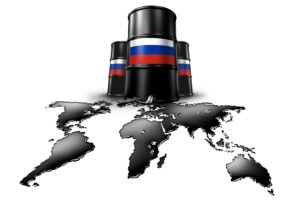The wreck removal of the stricken X-Press Pearl is set to kick off with the feeder ship’s operator announcing the signing of a contract with Shanghai Salvage Company (SSC) for the work.
The ship’s operator, X-Press Feeders, says the wreck removal plan will ensure the wreck is completely removed and all debris and pollutants are disposed of in a safe, proper manner.
Shanghai Salvage has established a project team for the salvage operation and has already mobilized the equipment necessary for work.
The wreck removal team will be supported by response tugs on a 24-hour watch to deal with debris or forms of pollutants. Regular water sampling will be ongoing at the site, with representatives of ITOPF and Oil Spill Response ready to respond immediately, if required,” X-Press Feeders said in its latest update.
Resolve Marine had previously commenced the recovery of the containers and debris lost overboard during the fire and subsequent sinking of the ship. The debris has been identified through side-scan sonar operations, undertaken during July and August, and its recovery and safe disposal is expected to be completed “in due course,” X-Press Feeders said.
Meanwhile, Sri Lankan authorities have submitted a second compensation claim which is being reviewed by the vessel owners P&I Club and discussions are ongoing.
“We continue to work with the Sri Lankan authorities towards the repatriation of the eight remaining crew members who are currently housed at a hotel in Colombo. We are eager to get them home to be reunited with their families,” X-Press Feeders said. Eleven other crew members from the vessel were repatriated to their home country in July.
The fire and sinking of the X-Press Pearl has set off the worst environmental disaster in Sri Lankan history.
The Singapore-flagged vessel first reported smoke in a cargo hold after arriving at a Colombo anchorage on May 20th with 1486 containers, including 81 Dangerous Goods Containers and 25 tonnes of Nitric Acid.
Despite firefighting efforts, the fire spread and set off a series of explosions that resulted in the entire vessel being engulfed by flames. Despite best efforts to save the ship, the X-Press Pearl eventually started taking on water and sank as salvors were attempting to tow it to deeper waters. As of early June, the ships aft portion was sitting on the seabed at a depth of about 21 meters while the forward area remained partially afloat.
Although the ship’s operator has reported that no noticeable fuel oil has spilled from the vessel, chemicals and small plastic pellets have been released into the environment and spread to nearby beaches and fishing grounds.
In the aftermath of the fire, it was revealed that a container with nitric acid was discovered to be leaking prior to the ship’s arrival in Sri Lanka. While the X-Press Pearl called Hamad Port in Qatar and Hazira Port in India for discharge and loading operations, they were unable to offload the leaking container as the ports lacked the facilities and expertise to handle the cargo.
The ship was also reported to be carrying 297 tonnes of Heavy Fuel Oil and 51 tonnes of Marine Fuel Oil.
In mid-June, Sri Lankan authorities reportedly arrested the Russian captain of the X-Press Pearl, but any updates regarding the case are not immediately clear.
Mr Mike Schuler
